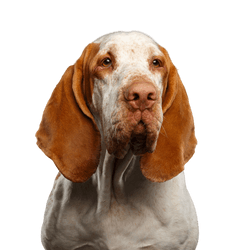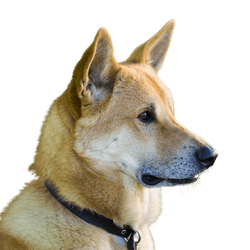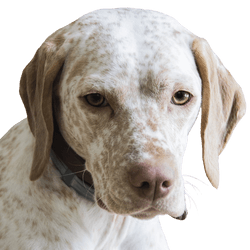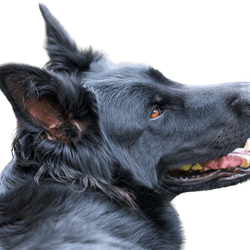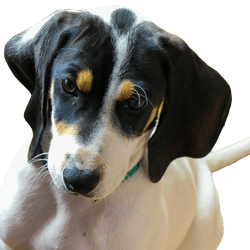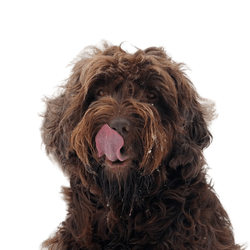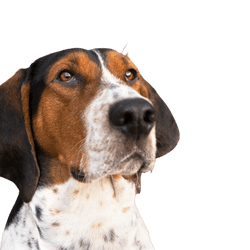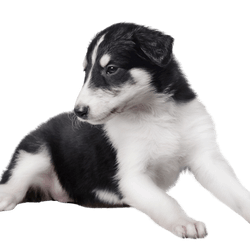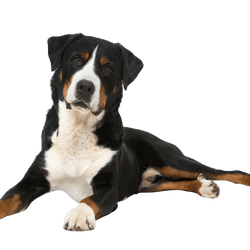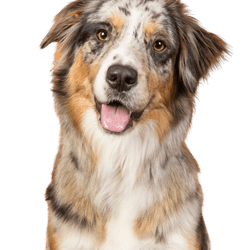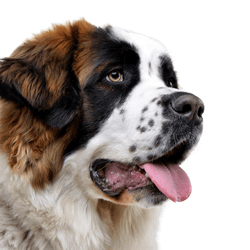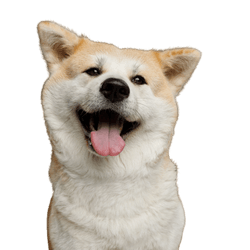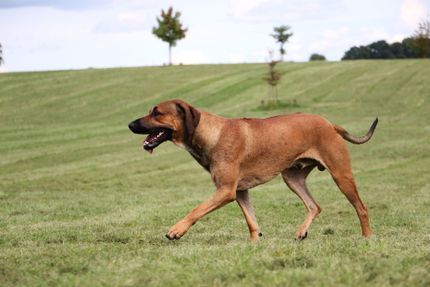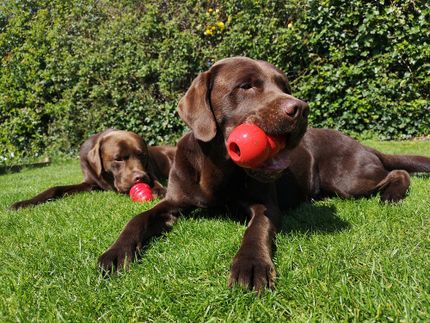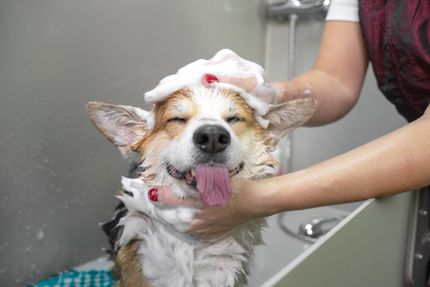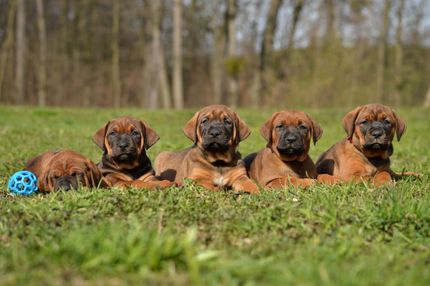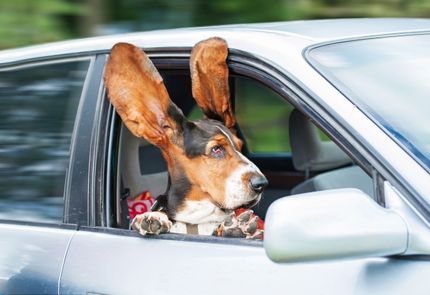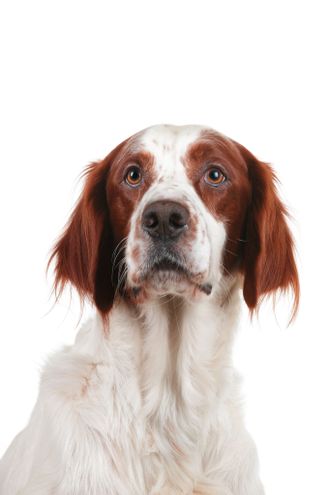
Irish Red and White Setter Breed description: Character & Co
Irish Red and White Setter
Facts & Origin
The Irish Red and White Setter is basically a very old dog breed, which has gained popularity again today. If you would like to get such a dog, you can find more information about this dog breed here. The Irish Red and White Setter belongs to the section 2 for British and English pointing dogs and here to 2.2 of the setters with working test as well as to the group 7 pointing dogs.
What is the origin of the Irish Red and White Setter?
The origin of the Irish Red and White Setter is in Ireland. It is currently believed that the breeding of this dog breed began at the end of the 17th century on Irish estates and had a long tradition there. For a long time the Irish Red and White Setter was more popular there than the Setter variant Red Setter. This changed only in the 19th century.
What are the breed characteristics of the Irish Red and White Setter?
The Irish Red and White Setter is a bicolored long-haired dog that is well suited as a hunting dog, but also as a family dog and is easier to train than its red relative.
Summary of the breed characteristics:
- bi-coloured
- longhaired
- easy to train
- good hunting dog
- good family dog
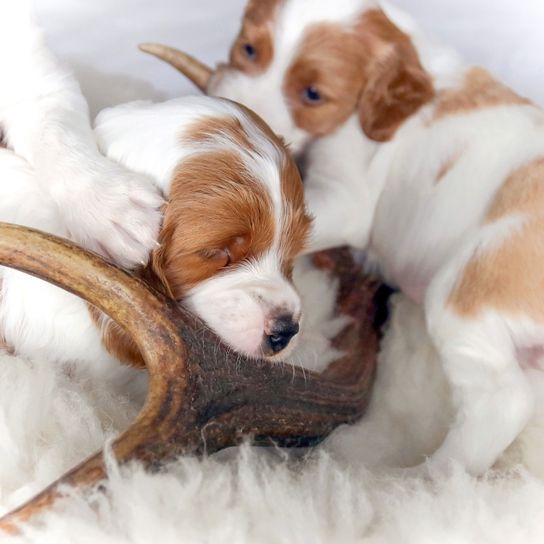
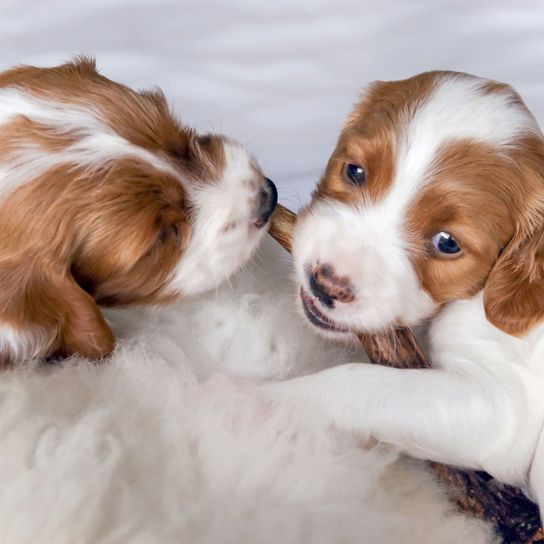

| Alternate Name | Irish Setter |
| Origin | Ireland |
| Life expectancy | 10 - 13 years |
| Care requirements | high-maintenance |
| Activity level | average |
| FCI group | British and Irish Pointers and Setters |
| AKC group | Sporting Group |
| KC group | Gundog Group |
Irish Red and White Setter mixes
Attitude, character and temperament of the breed
What are the typical characteristics of the Irish Red and White Setter?
Unlike the faster Red Setter, the Irish Red and White Setter was bred for strength and endurance. Although these dogs can be very spirited and agile in the wild, they are calm and comfortable at home. They therefore make great family dogs if you are looking to acquire a good family dog. However, these characteristics are also of interest to hunting dog lovers, should you be one of them.
Typical character traits in a nutshell:
- strong and persevering
- temperamental
- active
- quiet and comfortablein the house
Character
Usage

Health and breeding information
What are typical diseases of the Irish Red and White Setter?
Even with the greatest care and good feeding, it is possible for an Irish Red and White Setter to develop diseases such as hip dysplasia (HD), PRA - Progressive Retinal Atrophy, CLAD - Canine Leukocyte Adhesion Deficiency as well as problems with the teeth and eyes or even be deaf. This is the case with all other setter breeds as well.
Irish Red and White Setter breeding - where, how, what?
The Irish Red and White Setter is now also popularly bred in Germany and Austria. Often it is setter breeders at all who breed this variety in addition to other setter breeds. In general, good breeders always take care that the above mentioned hereditary diseases should not appear in the ancestry of the parents and that only healthy parents are used for breeding.


Appearance and coat of the Irish Red and White Setter
The Irish Red and White Setter is slightly wider and shorter than its relative, the Red Setter. Otherwise, both dog breeds look very similar. The Irish Red and White Setter also has long silky coat, but always in the basic color white with red areas in between. Tail, hind and forelegs as well as the outer sides of the ears are also feathered with very silky fur. The Irish Red and White Setter wears its ears always close to its head.
How big does the Irish Red and White Setter grow?
The males, with a height at the withers of between 62 and 66 cm, grow taller than the females, which only reach a height at the withers of 57 to 61 cm.
How much does an Irish Red and White Setter weigh?
At the moment there is no information about the normal weight of the Irish Red and White Setter.
How old does an Irish Red and White Setter become?
As mentioned above, the Irish Red and White Setter is in principle a very old and now rediscovered dog breed. Nevertheless, information about the average age is very rare and it is estimated to be 10-13 years.
| Fur length | medium |
| Fur | wavy |
| Ear shape | Floppy Ear |
| Tail | fanned out |
| Anatomy | rugged |
| Size ♀ | 57 - 61 cm |
| Weight ♀ | 25 - 34 kg |
| Size ♂ | 62 - 66 cm |
| Weight ♂ | 25 - 34 kg |
| Suitable For | Children |
Colors
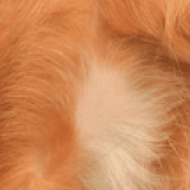
Known Diseases
Eye diseases
Often occur with allergies and intolerances.
Hip dysplasia (HD)
The hip dysplasia or hip joint dysplasia of the dog (HD) is a maldevelopment of the hip joint.
Progressive Retinal Atrophy (PRA)
Progressive retinal atrophy (PRA) is a slowly progressive death of the retina in dogs.
Numbness
Often occurs in old age.
Tartar
If dogs don't get a good food or sugary food, tartar can quickly appear.
Other large dogs
Useful Articles
You can find articles that might interest you in the dogbible blog to match your favorite breed.
Visit our magazineto stay up to date on dog trends.
To find out more, view our Privacy Policy
Find here the breed that suits you and find out what character traits it has. Here you can also learn more about the origin, size and weight of your favorite breeds.
Matching your favorite breed, you'll find articles that might interest you on the dogbible dog blog.
Second dog: This is what you have to consider when introducing each other
Dog with blue tongue: a list and why do they have blue tongues?
Dogs at the wedding - here's how you can incorporate your favorite one




